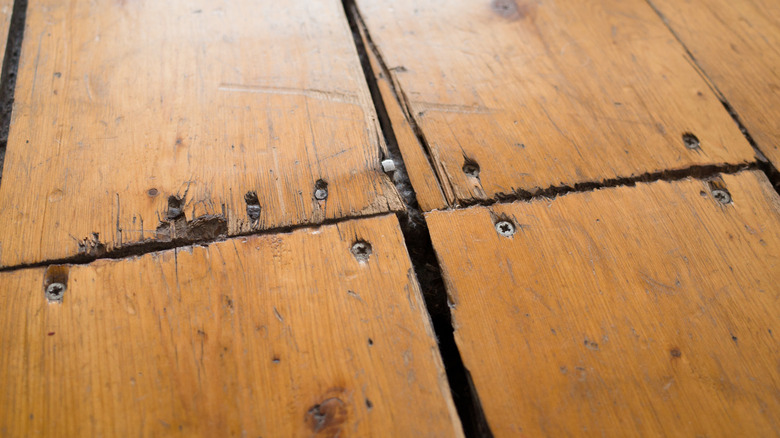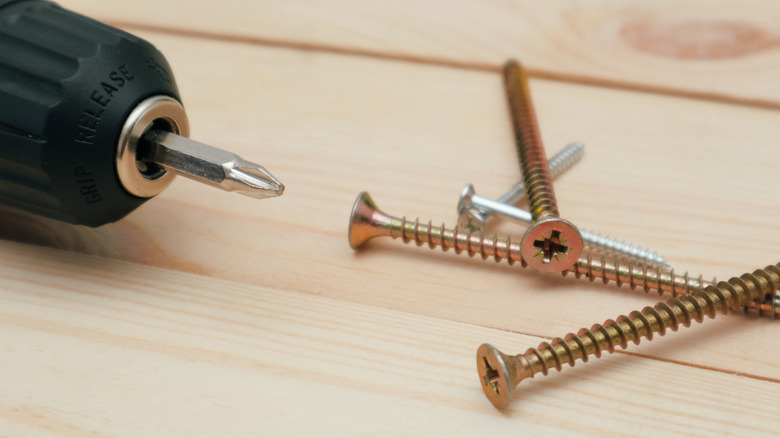The Affordable Way To Fill Holes In Your Hardwood Floor (Without Replacing Anything)
Hardwood is one type of flooring that never seems to be out of style. It adds a richness and warmth to a home that has always been hard to match. Even with a host of modern alternatives available, there are hardwood floor types you'll see everywhere in 2025.
Sadly, what ought to be an attractive feature may have been installed in a slapdash manner, leaving ugly screw heads visible. Screws may also have been driven in at random to try to prevent squeaks. The result is unsightly, but ripping up the flooring could be a mistake that costs you serious money down the line. The alternative is time-consuming, but with a little patience, it's possible to fill holes in your hardwood flooring without replacing any of the boards and make repairs that are virtually invisible. It's a trick that's also very affordable.
The secret is to sink the screws below the surface, fit a small wooden plug on top, then sand it smooth and refinish the floor. Done correctly, the fixings will probably be stronger than they are right now. Plus, it's a task that's well within the scope of the average DIYer, and the only person who will know about it is you. Let's look at how to fill those holes in detail.
How to fill holes in hardwood floors and leave an invisible finish
You need to remove each screw, drill out the hole to accept a wooden plug, drive the screw below the surface, and glue in the plug. When the glue has dried, sand the plug flush and refinish the floor. Be careful not to drill too deep, or you risk going right through the board. Find a discreet corner for a test hole, then plug that too.
It's important to tackle one screw at a time. Some of the boards could be under tension, and if you release several screws, they might lift or twist, making it difficult to reset them. Although you could reuse screws, it's better to use new ones. The existing may have been weakened by tannic acid found in several hardwoods. Screws with an anti-rust coating are recommended.
The easiest way to create plugs is to use dowels. However, when inserted, these present end grain. This absorbs the finish at a different rate than the board, so it might appear spotty. The best method is to find a board with grain as close to the original flooring as possible, then use a plug cutter to cut plugs with the grain lengthwise. Once inserted in the same direction as the plank, they will be almost impossible to spot.
There are a number of ways to bring hardwood floors back to life. Replacing ugly screw heads with wood plugs is one method that takes a while but costs very little and can completely revitalize the room.

